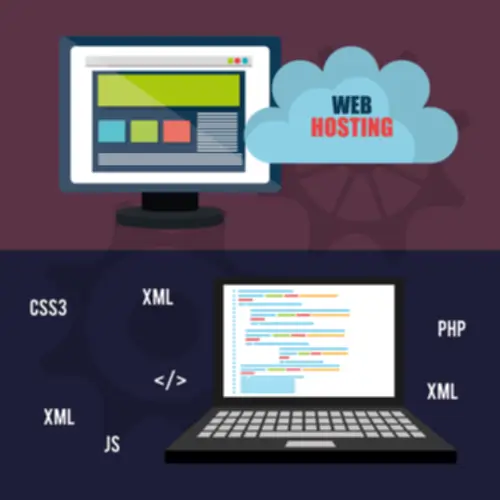Deciding which option is healthier for you will depend upon a quantity of elements, such as explicit use circumstances, the present degree of IT infrastructure, assets, and brief and long-term enterprise needs. What meaning, in reality, is that there is no definitive answer as to which of the two is best. Implementing SOA ensured that each one constituents involved could entry correct data in real-time. Utility company Delaware Electrical faced actual issues because of a five-year freeze on electricity prices imposed by the state. They needed to integrate techniques that didn’t communicate with each other, in order that they might remain solvent.

SOA makes use of heavyweight protocols, similar to Easy Object Access Protocol (SOAP), for communication between providers. It uses synchronous communication patterns, however it also supports asynchronous communication. The advantage here is that when there’s a sudden spike in posts, you’ll find a way to simply scale the service that manages posts while maintaining other services unaltered.
In SOA, providers are deployed together, making it troublesome to update one service without impacting others. Microservices can be deployed individually, as this enables extra flexibility in updates, supporting a lighter and sooner deployment strategy. SOA promotes the propagation of multiple heterogeneous protocols through its messaging middleware part. MSA attempts to simplify the architecture pattern by decreasing the variety of decisions for integration.
Each service is self-contained with its codebase and data, which means a failure in one service won’t immediately affect others. This compartmentalization results in a extra resilient system overall, as services can be scaled or restarted independently of each other. Furthermore, the distributed nature inherent in microservices architectures underpins system resilience, making it nimbler in responding to and recovering from partial system failures. Considering these use cases, it’s https://www.globalcloudteam.com/ clear that microservices architecture is a compelling choice for a wide range of applications, especially when the key needs are flexibility, scalability, and pace of deployment.
- These standalone models are self-contained, lowering dependencies and interactions with other services to a minimum.
- Earlier Than SOA existed, connecting your apps to relevant data—and its granularity and performance in other systems—was a fancy process involving point-to-point integration.
- The unfastened coupling of SOA service interfaces allows for significant component reusability, which might result in considerable savings in growth time and prices.
- The migration team must consider these factors when switching to a microservices-based system.
Step 6: Integrate Code With Slack Bot

Use the proper tools to realize visibility and monitoring capability throughout migration. They might assist cut back cognitive overhead and manage code simply Digital Trust, enabling developers to deploy quicker and all at once. Nevertheless, they aren’t scalable or flexible enough to adapt to new applied sciences and frameworks on the market. OpenLegacy offered a microservices integration solution that was built-in quicker and cheaper than other choices.
These providers are self-contained, independent models of performance that may be accessed remotely through standardized protocols, corresponding to HTTP or SOAP. The key precept of SOA is the separation of considerations, where each service focuses on performing a selected task and could be developed, deployed, and scaled independently. The selection between SOA and Microservices is dependent upon numerous factors, including the scale and complexity of the appliance, the group’s construction, and its objectives for scalability and agility. SOA is often the better selection for giant enterprises with legacy systems and sophisticated enterprise processes. In distinction, Microservices are ideal for organizations trying to build cloud-native applications that require rapid development, independent scalability, and steady delivery. These services form the spine of complex functions, which regularly require a compositional method to enterprise performance.
Service-oriented Architecture Vs Microservices Structure: Comparing Soa To Msa
This is a key facet that retains it forward in the microservices vs service-oriented structure debate. Service-Oriented Structure (SOA) emerged in the early 2000s as a way to design software program methods by offering companies to different elements via a communication protocol over a network. SOA was designed to handle the challenges of monolithic architectures by promoting modularity, reusability, and interoperability. Each Microservices and Service-Oriented Architecture (SOA) offer distinctive benefits and are suitable for several sorts of tasks. Microservices present higher flexibility and scalability, making them perfect for modern, cloud-native applications.

On the other hand, SOA’s strengths lie in integrating and managing complicated, enterprise-wide systems with a focus on reusability and interoperability. SOA primarily caters to enterprise use circumstances the place providers may be reused while ensuring application interoperability. Its modular design lets businesses scale providers independently and handle varying site visitors hundreds with out disruption. Now that we now have a transparent understanding of SOA, let’s explore Microservices as one other architectural pattern. Microservices is an strategy that advocates breaking down massive monolithic purposes into smaller, impartial providers that can be developed, deployed, and scaled individually. Microservices structure is a more granular strategy to SOA, where an utility is broken down into smaller, independently deployable providers.
If interoperability and reusability are the principle requirements, SOA fits it right there. On the opposite hand, microservices architecture fits well with organizations that prioritize velocity, agility, flexibility, and continuous supply. Microservices account for larger flexibility and agility in software development. Organizations can quickly adapt new applied sciences on the go with out impacting the complete system and stay related out there.
You’ll adopt a DevOps strategy that encourages more ownership and accountability in a collaborative surroundings. Async communication is suitable for systems with event-driven architectures, corresponding to e-commerce purposes with separate providers for order creation, cost processing, and cargo. It suits applications where individual companies don’t depend on quick suggestions.
The field is continually evolving, and new approaches and finest practices are always soa vs microservices rising. Migrate element teams to macroservices (move component teams to separate tasks and make separate deployments). Customers expect their system to return knowledge with a excessive stage of detail, usually as quick as the data is acquired.